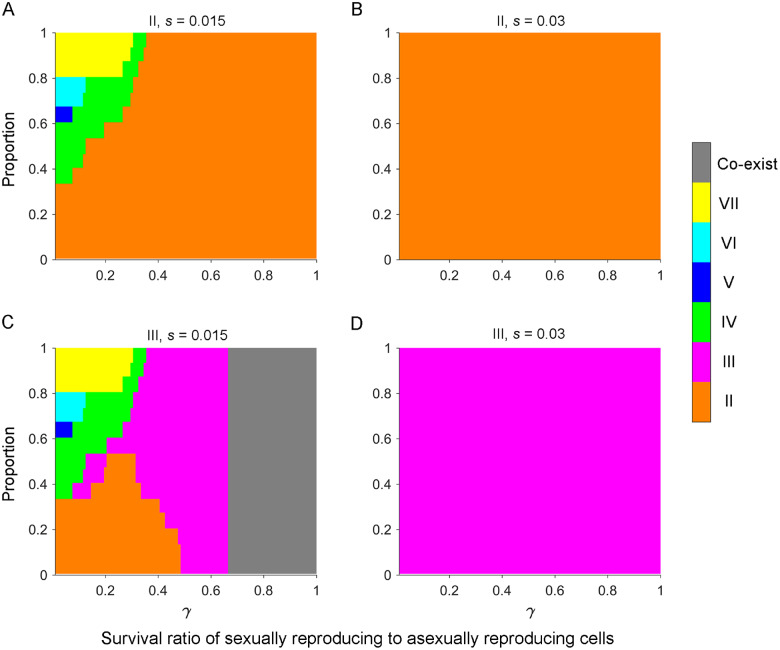Fig. 4.
The action of natural selection on a beneficial mutation promotes fixation of a single mating type. Populations initially contained equal proportions of any two mating types. (A–D) Immediately after the first sexual cycle, mating type II (A and B) or III (C and D) obtained a beneficial mutation in the MAC, with a selection coefficient s of 0.015 (A and C) or 0.03 (B and D). Population size, N = 106. The initial mutation frequency was 1/N. Other parameters were number of asexual growth rounds, n = 100; number of cell pairing rounds, T=∞; probability of paired cells separating, ; and SD pattern, =0.302 (II), 0.010 (III), 0.271 (IV), 0.047 (V), 0.118 (VI), and 0.252 (VII). Results show the average of 15 random combinations of two initial mating types.

